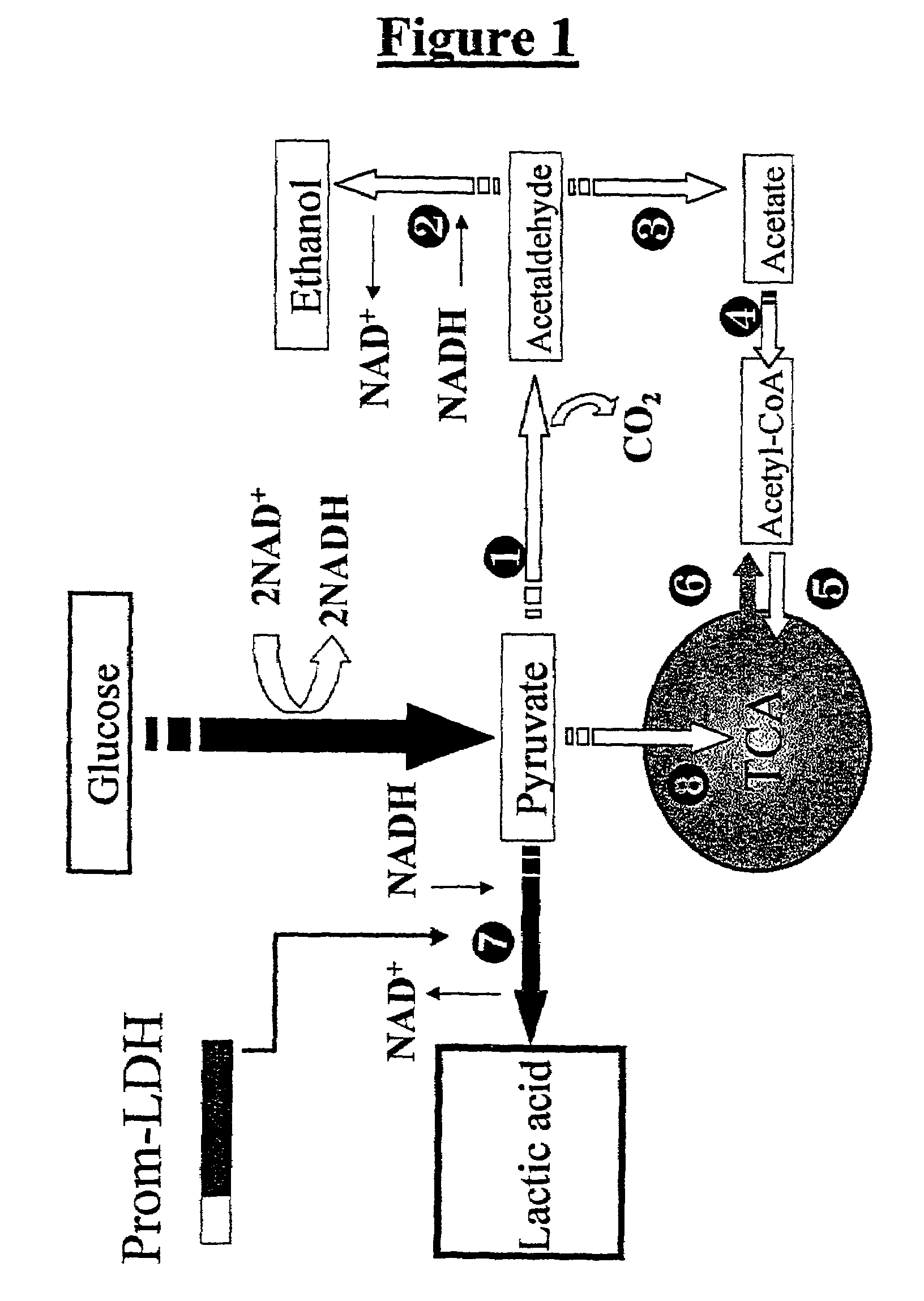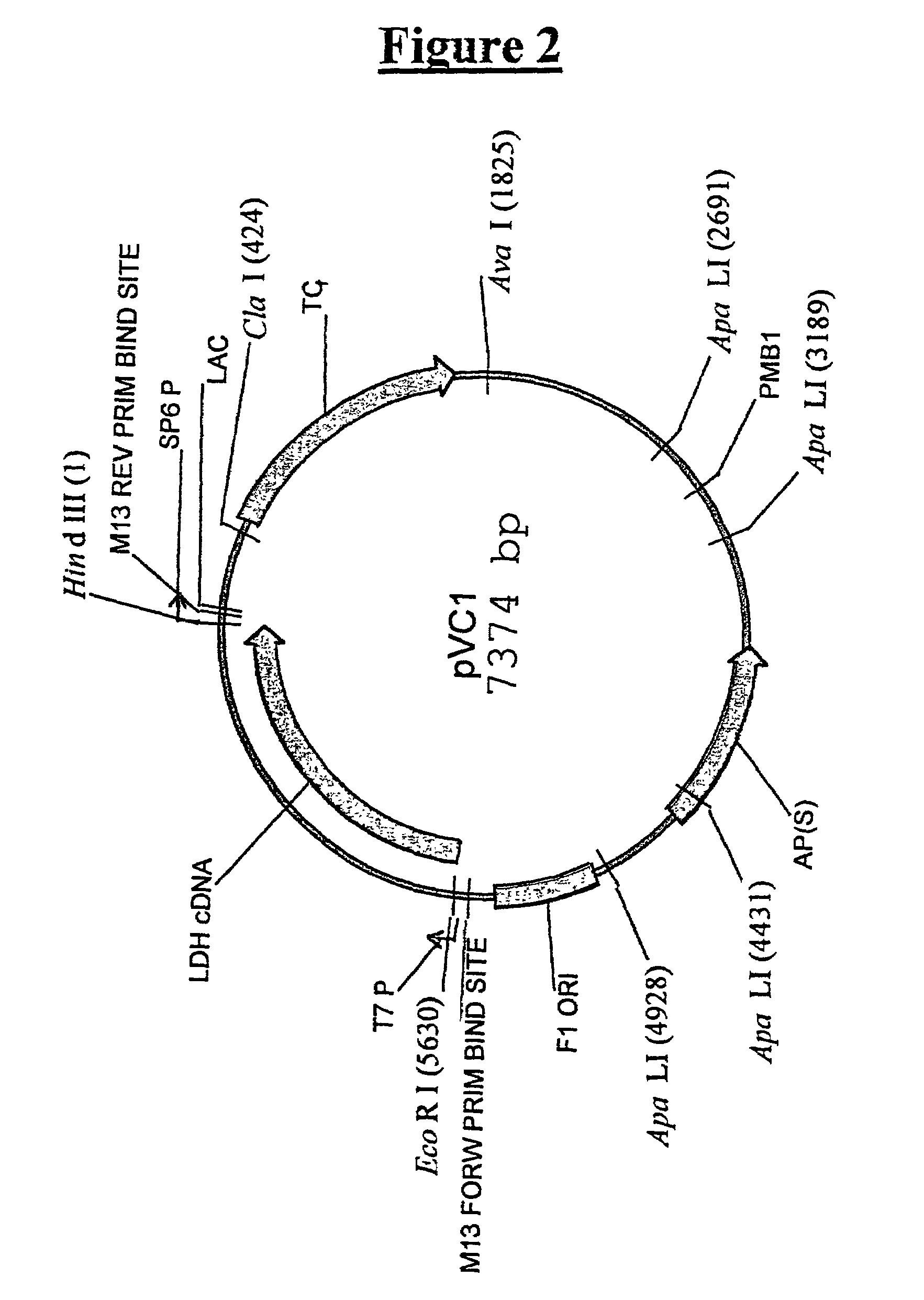Processes for producing lactic acid using yeast transformed with a gene encoding lactate dehydrogenase
a technology of lactate dehydrogenase and lactic acid, which is applied in the field of processes for producing lactic acid using yeast transformed with a gene encoding lactate dehydrogenase, can solve the problems of low yield in the production of lactic acid for both the processes described, and the neutralisation of lactic acid,
- Summary
- Abstract
- Description
- Claims
- Application Information
AI Technical Summary
Benefits of technology
Problems solved by technology
Method used
Image
Examples
Embodiment Construction
[0021]It has been found that production of lactic acid can be obtained by metabolically modified yeasts belonging to the genera Kluyveromyces, Saccharomyces, Torulaspora and Zygosaccharomyces.
[0022]More particularly, it has been found that very high yields in the production of lactic acid are obtained by engineered yeast strains so as to replace at least the ethanolic fermentation by lactic fermentation.
[0023]Even higher yields (>80% g / g) in the production of lactic acid may be obtained by engineered yeast strains so as to replace both the ethanolic fermentation and the use of pyruvate by the mitochondria by lactic fermentation.
[0024]To this purpose, the invention also provides transformed yeast cells having an increased LDH activity, for instance as a consequence of an increased LDH copy number per cell or of the use of stronger promoters controlling LDH expression.
[0025]An increased LDH copy number per cell means at least one copy of a nucleic acid sequence encoding for lactic de...
PUM
| Property | Measurement | Unit |
|---|---|---|
| pH | aaaaa | aaaaa |
| pH | aaaaa | aaaaa |
| pH | aaaaa | aaaaa |
Abstract
Description
Claims
Application Information
 Login to View More
Login to View More - R&D
- Intellectual Property
- Life Sciences
- Materials
- Tech Scout
- Unparalleled Data Quality
- Higher Quality Content
- 60% Fewer Hallucinations
Browse by: Latest US Patents, China's latest patents, Technical Efficacy Thesaurus, Application Domain, Technology Topic, Popular Technical Reports.
© 2025 PatSnap. All rights reserved.Legal|Privacy policy|Modern Slavery Act Transparency Statement|Sitemap|About US| Contact US: help@patsnap.com



